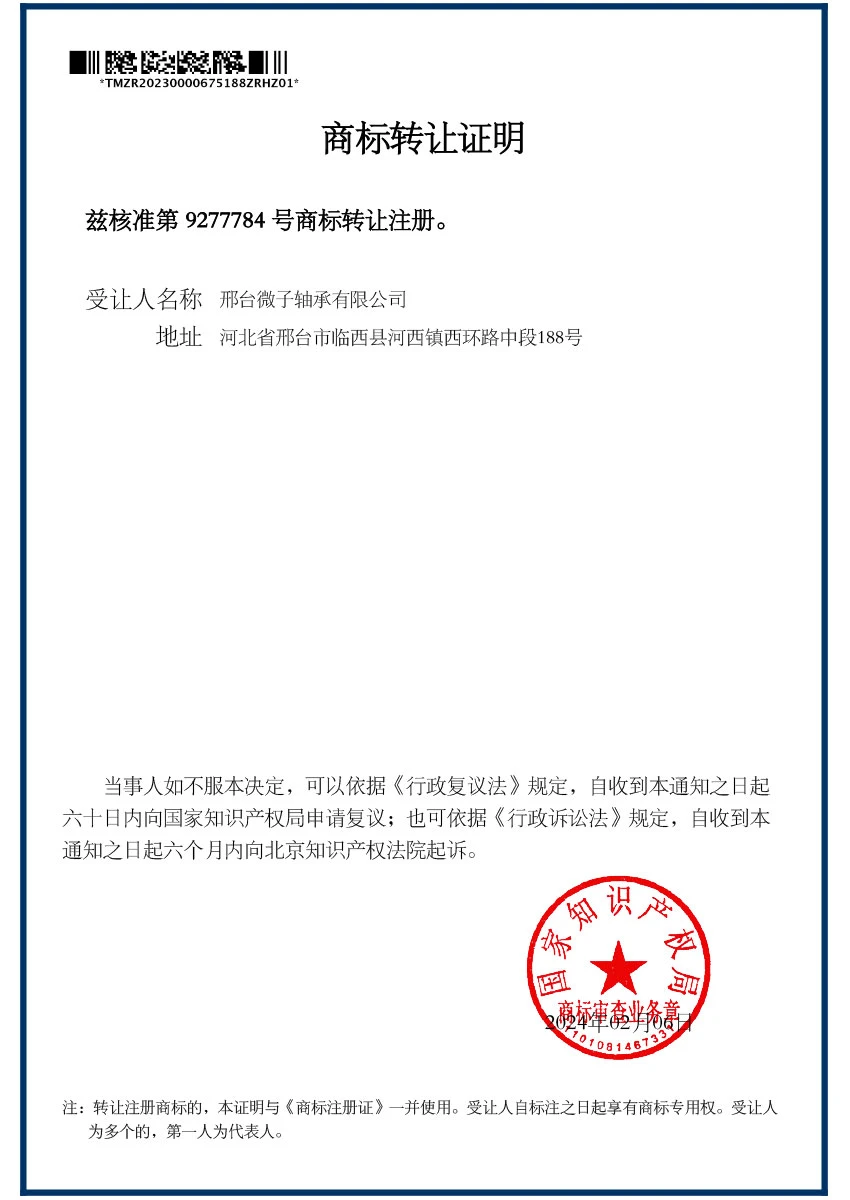
10 月 . 05, 2024 19:55 Back to list
angular contact thrust ball bearing
Understanding Angular Contact Thrust Ball Bearings
Angular contact thrust ball bearings are a crucial component in many industrial applications, marrying strength and precision in mechanical assemblies. These bearings are designed to accommodate axial loads in one direction while allowing minimal radial load, making them particularly useful in scenarios where thrust loads are prevalent. In this article, we will delve into the structure, working principles, advantages, and applications of angular contact thrust ball bearings.
Structure and Design
Angular contact thrust ball bearings consist of two main components the inner ring and the outer ring. The inner ring is typically mounted onto the shaft, while the outer ring is generally fixed in the housing. The most distinctive feature of these bearings is the angle at which the raceways are cut—this angle allows the bearing to handle axial loads more effectively. The balls are positioned in such a way that they are in contact with both raceways at an angle, enhancing load capacity and allowing for higher rotational speeds compared to traditional thrust bearings.
The angle of contact can vary, and it is essential to select the appropriate contact angle based on the specific application requirements. Common angles range from 15 to 40 degrees, with larger angles generally capable of handling higher axial loads. Additionally, some designs incorporate grooves to facilitate lubrication and cooling, further extending the lifespan of the bearing.
Working Principles
The operational mechanism of angular contact thrust ball bearings is relatively straightforward. When an axial load is applied, the bearing's design allows the load to be transmitted across the contact points between the balls and the raceways. This distribution of force helps to minimize stress and wear on individual components, leading to increased durability and reliability.
Due to their design, angular contact thrust ball bearings allow for smooth rotation even under heavy loads. The bearings are engineered to maintain a precise ball and raceway alignment, which reduces friction and wear. Proper lubrication is vital to their performance, as it helps to dissipate heat and remove debris, ensuring smooth operation.
Advantages of Angular Contact Thrust Ball Bearings
angular contact thrust ball bearing

1. Enhanced Load Capacity Angular contact thrust ball bearings can handle higher axial loads compared to standard thrust ball bearings, thanks to their design. This makes them ideal for high-load scenarios.
2. Higher Rotational Speeds These bearings can operate at higher speeds due to their efficient design, contributing to improved performance in various applications.
3. Reduced Friction With proper lubrication, angular contact thrust ball bearings exhibit lower friction levels than many other bearing types, which can lead to energy savings and increased system efficiency.
4. Durability and Reliability Their design allows for optimal distribution of loads, reducing wear and extending the life of both the bearing and the associated machinery.
5. Versatility Angular contact thrust ball bearings can be utilized in various applications, ranging from automotive to industrial machinery, making them a versatile choice for engineers and designers.
Applications
Angular contact thrust ball bearings are used in a multitude of industries and applications. Some common uses include
- Automotive These bearings are often employed in transmissions and differential assemblies, where they handle significant thrust loads. - Machine Tools They play a critical role in high-speed spindles, where precision and load capacity are essential. - Aerospace In this industry, reliability and performance are paramount, making angular contact thrust ball bearings suitable for various aircraft components. - Robotics Used in robotic arms and joints, these bearings allow for precise movements and load handling. Conclusion
In summary, angular contact thrust ball bearings are an integral part of many mechanical systems that require precise handling of axial loads. Their unique design and numerous advantages make them a popular choice across a range of industries. Understanding the capabilities and applications of these bearings can significantly contribute to the efficiency and reliability of engineering projects, paving the way for innovations in mechanical design and functionality. As industries continue to evolve, the importance of selecting the right bearing type remains crucial for ensuring optimal performance and longevity of machinery.
Latest news
-
Unlocking Efficiency with Spherical Roller Bearings
NewsOct.29,2024
-
The Ultimate Guide to Thrust Ball Bearings
NewsOct.29,2024
-
The Power of Thrust Roller Bearings: Engineered for Excellence
NewsOct.29,2024
-
The Power of Deep Groove Ball Bearings for Your Application Needs!
NewsOct.29,2024
-
The Power and Performance of Cylindrical Roller Bearings
NewsOct.29,2024
-
High-Quality Ball Bearing Manufacturing Machines
NewsOct.29,2024
